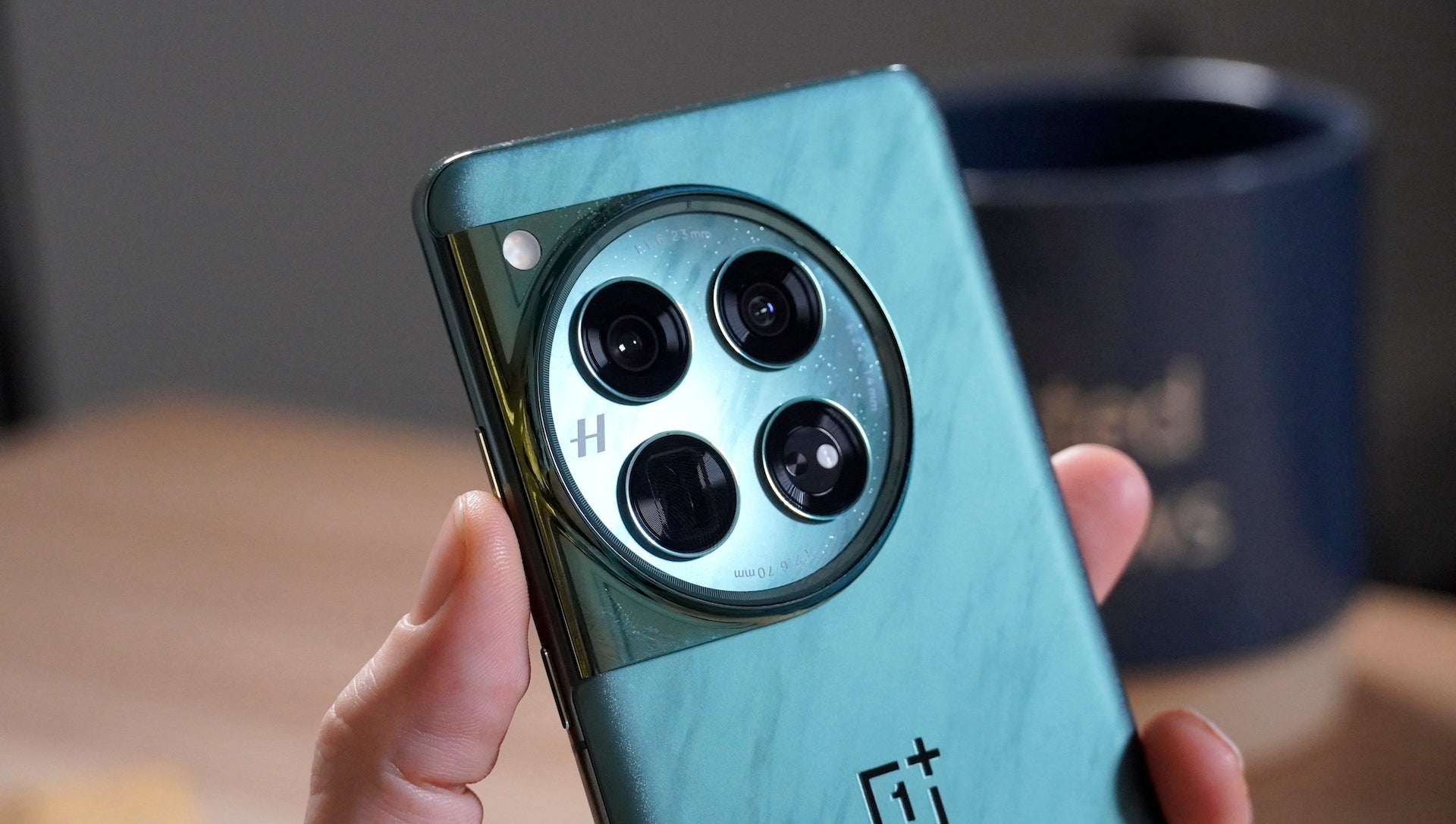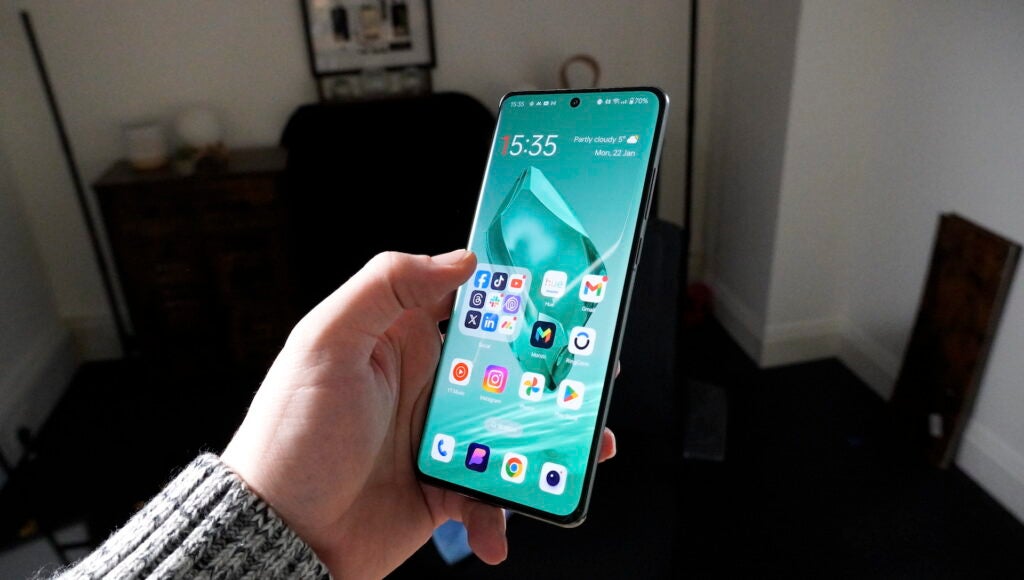Following Apple’s announcement of the new iPhone 16, we’re interested to see how its specs compare to the OnePlus 12.
While the most obvious difference between the two is that the iPhone 16 runs on iOS while the OnePlus 12 runs on Android, there are other important factors to keep in mind. For example, the iPhone 16 is considerably smaller at 6.1-inches and 170g whereas the OnePlus 12 is 6.8-inches and 220g.
We’ve compared the specs of the iPhone 16 to the OnePlus 12, the latter of which we awarded a solid four-stars, and noted the differences between the handsets below.
Price and Availability
The iPhone 16 will be available to pre-order from Friday, September 13th ahead of its official launch on September 20th. With a choice of five colours including Black, White, Pink, Teal and Ultramarine, the iPhone 16 has an RRP of £799/$799.
Having launched earlier this year, the OnePlus 12 is available now in two colours (Flowy Emerald and Silky Black) and has a starting RRP of £849/$799.99.
A18 Bionic chip vs Snapdragon 8 Gen 3
Powering the iPhone 16 is Apple’s newest A18 Bionic chip, which is exclusive to the iPhone 16 and 16 Plus. Apple promises the A18 delivers a huge leap in performance and power efficiency as it’s built on second-generation 3nm technology to help enable the running of Apple Intelligence.
The A18 also sports an upgraded 16-core Neural Engine which is optimised for larger generative models and runs ML models up to 2x faster than last year’s A16 Bionic chip.
On the other hand the OnePlus 12 runs on Qualcomm’s current premium processor, Snapdragon 8 Gen 3. Similarly, the Snapdragon 8 Gen 3 has a new neural processing unit to its predecessor which is up to a whopping 40% more efficient, enabling the chipset to power AI quickly and efficiently.
Despite this, there’s a huge lack of AI tools found in the OnePlus 12 which means the handset isn’t able to fully utilise the chipset’s performance.
Otherwise, we found that although the OnePlus 12 received slightly lacklustre figures in our benchmark tests, in everyday use performance was rapid with the handset able to handle most tasks such as scrolling through media-heavy apps and playing games.


The iPhone 16 has Apple Intelligence
The iPhone 16 series was hailed by Apple as “built from the ground up for Apple Intelligence” and will be the first, alongside last year’s iPhone 15 Pro and 15 Pro Max, to feature the Apple Intelligence toolkit.
Introduced at WWDC24, Apple Intelligence is Apple’s upcoming personal intelligence toolkit that “combines the power of generative models with personal context to deliver intelligence that is […] useful and relevant” to the users.
These features will include Genmoji and Image Playground, Writing Tools which allows users to refine their work with AI-powered rewriting, proofreading and summarising and a more natural and flexible Siri.
The OnePlus 12 on the other hand is severely lacking in AI tools. As we mentioned earlier, even though the Snapdragon 8 Gen 3 processor is more than capable of running AI programs, seen with Samsung Galaxy S24 Ultra, OnePlus simply hasn’t taken advantage of this.


The OnePlus 12 has three rear cameras
The OnePlus 12’s trio of rear cameras were designed with Hasselblad and consist of a 50MP main, 64MP 3x telephoto and 48MP ultrawide lenses. Although it lacks any of the exciting AI-powered photo editing tools found in other Android smartphones such as the Pixel 9, and coming soon to the iPhone 16 with the Clean Up tool, we still found captured shots to be vibrant and dynamic.
Having said that, images can sometimes appear too “artificially bright” plus the 120x zoom is “near unusable”, although the lower ends are much better.
Otherwise the iPhone 16 sports a dual-camera system that includes a 48MP Fusion camera and an upgraded 12MP ultrawide lens. Apple explains that the Fusion camera is “like having two cameras in one, so users can get closer to the subject to easily frame a photo” while the new ultrawide can gather up to 2.6x times more light for higher image quality.
The iPhone 16 also has a new button to aid in photography called Camera Control, helping users to frame their shot and adjust control options such as zoom, exposure or depth of field, all by sliding their finger along the button.


The OnePlus 12 has a 120Hz refresh rate
We hailed the OnePlus 12’s display as a “real treat for the eyes, with every bit of premium screen tech packed into the 6.8-inch panel.” Not only does it boast a dynamic 1-120Hz refresh rate but you’ll also find 2K resolution and a peak brightness of 4500nits which means it’s perfectly usable in any lighting conditions.
There’s also PWM dimming technology which reduces eye strain and OnePlus’ own AquaTouch which makes the display usable even when it’s wet.
Apple, on the other hand, reserves its 120Hz refresh rate technology, coined ProMotion, specifically for its Pro handsets, so the iPhone 16 and 16 Plus unfortunately miss out and instead have just a 60Hz refresh rate.
At just 6.1-inches the iPhone 16 has a Super Reina XDR display that includes Apple’s Dynamic Island. It also boasts up to 2000 nits peak brightness when outdoors which although sounds significantly less than the OnePlus 12, in real-world use is perfectly sufficient for comfortable use in all lighting conditions.


The OnePlus 12 supports faster charging
One of the areas which lets the iPhone down is its lack of true fast charge capability. Although the iPhone 16 does support up to 30W fast charging and up to 25W MagSafe Wireless charging, it simply can’t compete with the OnePlus 12.
The OnePlus 12 supports 80W SUPERVOOC charging, with OnePlus even including an 80W charger in the box, which we found could reach a 100% charge in just 26 minutes. It also supports 50W AIRVOOC wireless charging, although you will need to buy a separate charger for this.
In addition, as the OnePlus 12 runs on the energy-efficient Snapdragon 8 Gen 3 processor, we found the handset’s battery lasted easily for one-day but could also be stretched out for two-days with less intense use.
Early verdict
As is usually the case when deciding between an iPhone or an Android, it can depend predominantly on which ecosystem you’re currently invested in. Having said that, both the iPhone 16 and OnePlus 12 have their own respective pros and cons which should still be considered.
While the OnePlus 12 has a stunning 2K, 120Hz display, three rear cameras and supports super fast charging, the iPhone 16 boasts the AI prowess of Apple Intelligence whereas the OnePlus 12 has no AI capability whatsoever.
We’ll refrain from forming conclusive opinions until we’ve reviewed the iPhone 16, so be sure to check back soon for our final verdict on the two smartphones.




